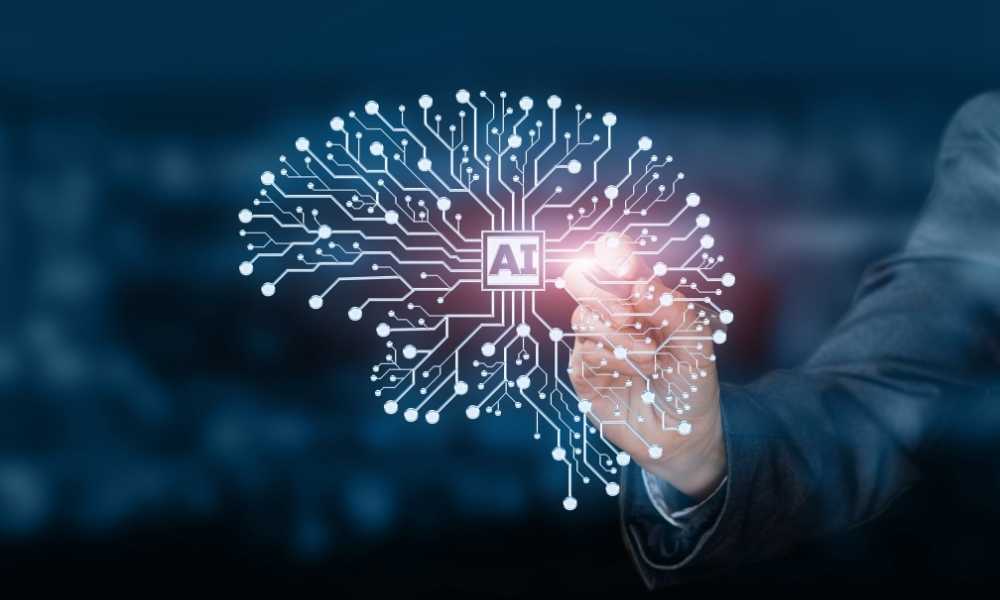How Artificial Intelligence is Transforming Cybersecurity and Preventing the Next Generation of Hacking Over the last few years, many hackers and cyber intrusions have skyrocketed. As a result, corporations have to pay money to protect their data and assets. Still, nearly every individual around the globe has been hacked at some point.
It may appear to be an insurmountable barrier, but it isn’t! According to the most recent cybersecurity developments in the banking sector, artificial intelligence leads to much higher success rates in avoiding hacking.
How Does Artificial Intelligence (AI) Increase Cyber Security and Protect us From Future Attacks?
The future of cyber security is auspicious. We’re already seeing AI-powered security solutions that help us protect our data from hackers and other crooks. With AI’s help, we can predict the next attack and take preventative measures ahead of time.
This will save us time and money and help us avoid the hazards of a hacker assault. AI-based cybersecurity solutions assist a variety of businesses. For example, while AI-based cybersecurity solutions are already being used to prevent fraud and identity theft, AI’s impact on security is vast.
In the fight against hacking, artificial intelligence is at the forefront. It works by regularly studying new cybersecurity vulnerabilities to detect potential threats or breaches before they happen! AI will be able to perform real-time malware scans in the future, alerting users to potential risks before they cause harm. This technology will also help “hacking detectives” track down and apprehend hackers who have stolen data.
What Are the Benefits of Artificial Intelligence and Machine Learning in Cybersecurity?
Machine Learning and Artificial Intelligence allow machines to learn without being explicitly programmed. The capabilities of machine learning have assisted various organizations in developing cyber security products that are more accurate and faster than those developed using traditional methods.
Machine learning was first used to detect harmful files in cyber security. The impact of AI and machine learning on information security may be observed in their ability to adapt swiftly to new threats and the elimination of the need for manual data log analysis as cyberattacks get more sophisticated. One of the earliest products to use machine learning was Malwarebytes.
Malwarebytes uses machine learning to detect and classify specific types of malware, such as the ransomware WannaCry and Petya. Machine learning is also used in Symantec’s DeepSight Threat Prevention technology. DeepSight, for example, uses machine learning to detect behavioral changes and dangerous files.
Let’s say you want to learn more about machine learning or improve your skills so you can work as a high-quality machine learning engineer. There is a range of courses and publications accessible in this instance. Aurélien Géron’s Hands-on ML with Scikit-Learn and TensorFlow is my favorite machine learning book.
Artificial Intelligence Applications in Cybersecurity for Enterprise Customers Businesses, particularly those in the enterprise, are increasingly concerned about cybersecurity. With the increasing frequency of cyberattacks, it is more important than ever for businesses to take proactive measures to defend themselves.
Artificial intelligence can help a company protect itself against cyber-attacks in various ways. One method is to use cybersecurity solutions powered by artificial intelligence. These technologies aid in the detection and prevention of cyber-attacks by continuously monitoring networks and data centers for anomalies or unexpected activities. They also protect against ransomware and other malware that can infiltrate a company’s system and cause havoc.
If you think you’ve been the victim of a cyber-attack, you can use our FREE Ransomware Response Checklist to limit the damage. Another option to safeguard a company from cyberattacks is to utilize AI as a firewall between the internet and the company’s data center or network. Installing is one way to achieve this.
In the Past, Deep Learning and AI Were Used to Transform Cybersecurity
Cyber security was a pretty simple undertaking. To obtain access to an individual’s account, a hacker would have to guess their password. Today’s cyber security situation is complicated, with attackers using machine learning and artificial intelligence to automate attacks.
The problem is that the human brain is incapable of keeping up with how hackers develop new forms of attacks. Artificial intelligence and machine learning can examine data from several sources and predict new types of assaults, where artificial intelligence and machine learning come in handy. Cyber security is an integral part of cyber defense. Advanced threat detection and response systems, such as Blumira, are recommended for ensuring cybersecurity.
Artificial Intelligence and Machine Learning’s Limitations
To build and maintain AI systems, businesses must invest significant time and money in resources such as processing power, memory, and data.
Data Collections
The usage of training data sets is used to develop AI models. Teams of security experts must acquire access to a wide range of data sets containing harmful code, viruses, and anomalies. Some companies don’t have the resources or time to assemble all of these accurate data sets.
Attacks by Hackers
Attackers are constantly testing and improving their malware to make it resistant to AI-based protection technologies. Hackers use artificial intelligence to develop increasingly sophisticated assaults and breakthrough traditional security mechanisms.
Fuzzing the Nervous System
Fuzzing is a technique for finding weaknesses in software by generating vast volumes of random input data. Artificial intelligence is used in neural fuzzing to quickly test a large number of random inputs. Fuzzing, on the other hand, has a good aspect. Using the capabilities of neural networks, hackers can obtain knowledge about a target system’s weaknesses. Microsoft devised a method for incorporating this strategy into their program, resulting in more secure and difficult-to-exploit code.
Conclusion
We talked about how artificial intelligence can improve cyber security and protect us from future hackers. You’ve studied the different types of artificial intelligence applications in cybersecurity and how deep learning and artificial intelligence are changing the way cyber security is done. Finally, I mentioned some of AI’s and Machine Learning’s limits. Artificial intelligence and machine learning are being more widely employed in cyber security, which likely continue in the future.


